Can you embed paper in resin?
Yes! But it needs a bit of love before you can do it successfully. Stephanie here from Crafting in the Rain and we’re talking about a couple of ways you can prep paper for resin. Then you can choose the best method based on the supplies you have, and what paper you are going to seal in resin.
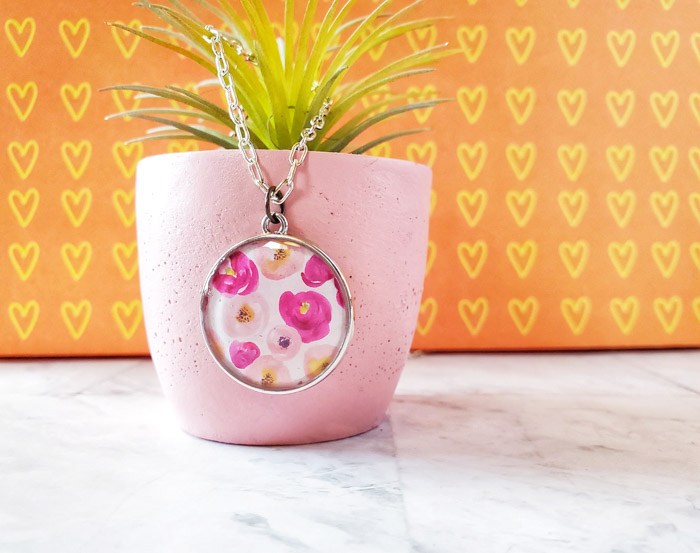
There are lots of types of paper you might want to embed in resin for coasters, jewelry or decor. Photos, cardstock, book pages, stickers, and even maps are all very common resin additions.
(NOTE: White or very light-colored paper can discolor over time in resin.)
Why is sealing the paper before necessary?
Since paper is a porous material, the fibers can absorb the resin or epoxy. This can create staining, darkening, or uneven patches. To prevent the paper from soaking up any resin, it first needs to be sealed so the resin remains on the outside.
For today’s experiment, I used sticker paper (blue floral), photo paper (purple pattern) and cardstock (yellow). I did epoxy pours on each type of paper after doing no treatment, a spray sealer, and decoupage glue.
I used EnviroTex Lite to pour over the paper samples in little plastic lids so I could see what worked best. Follow all instructions printed in the box, including safety guidelines, when mixing epoxy and resin.

Untreated paper in resin
Looking at each of these samples, they have darkened more than the treated versions. The sticker paper and photo paper, in particular, have several tiny bubbles that seeped out of the edges.
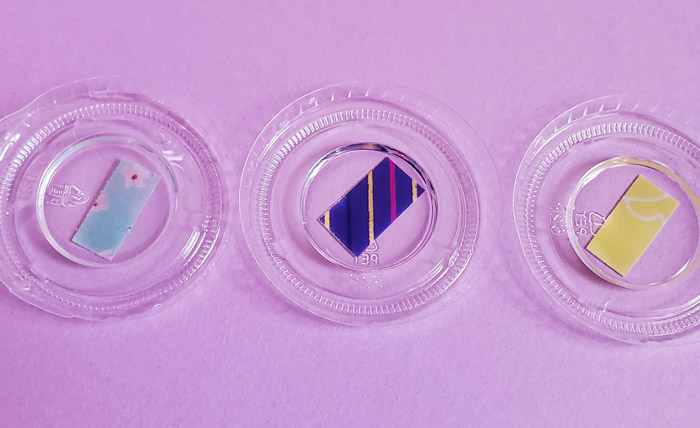
Option One: Resin Spray Sealer
I treated each sample of paper with a few light coats of Envirotex Resin Spray Clear Sealer. I did a few coats on the front. Then when the paper pieces were dry I flipped them to repeat on the back.

I really liked how this worked on the photo paper. The color on the photo stayed true and didn’t bleed.
On both the sticker paper and the cardstock, the resin still seemed to seep in and darken the paper a bit. If using a spray sealer on these types of paper, do several light coats, not just a few heavy coats, to be sure that the paper is completely sealed before casting in resin or epoxy.
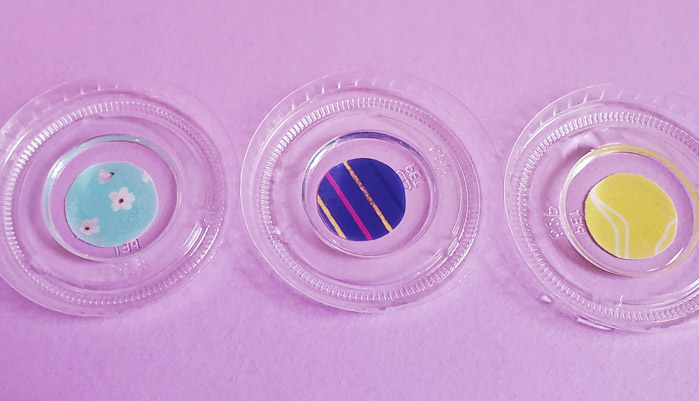
Option Two: Ultra Seal
I placed each paper sample on a plastic sheet to protect my table, and to make sure I could easily spread glue to the edges. I brushed one coat on the top and then a coat on the back after it was dry.
Any dried glue that sticks out from the edges can be trimmed away with scissors.

The glue smeared the photo paper just a little, but it worked great on the sticker paper and the cardstock.
You can see that the blue and yellow are still bright and vibrant – the epoxy couldn’t get into the paper fibers.
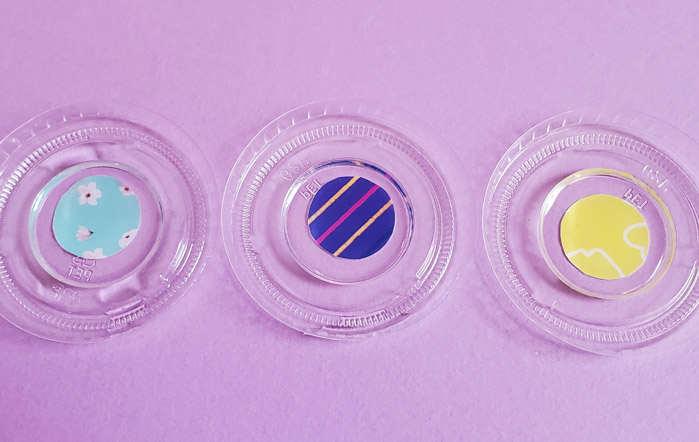
Out of this experiment, my favorite ways to prep paper for resin are as follows: Spray sealer for photos, and Ultra Seal for sticker paper and cardstock.

I would also recommend sealing book pages, magazine pages and stamps with resin spray sealer. They would be more likely to smear ink, and also wrinkle with brushed glue like Ultra Seal. Thicker papers hold up to the glue well.
If your sealed paper item does wrinkle at all, you can press it overnight with heavy books after the sealer has dried.
After you have sealed the paper you can add them to your resin projects, like these pendants!
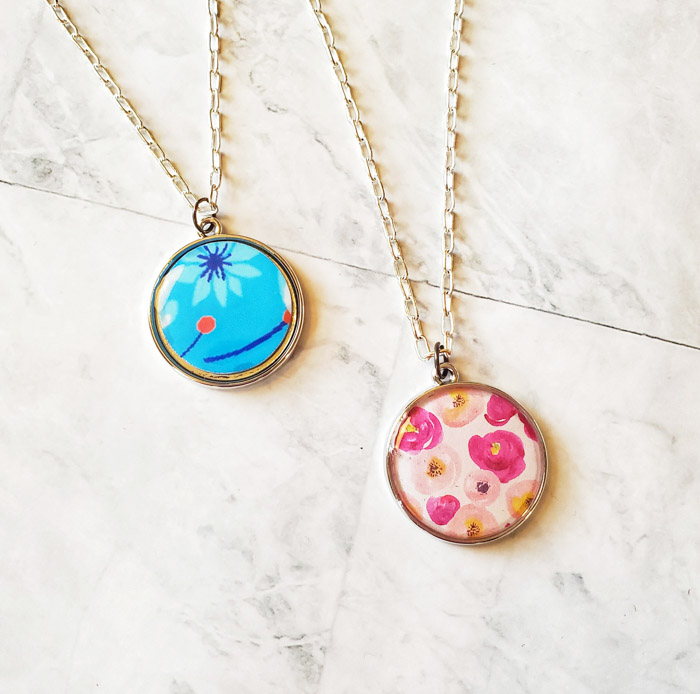
Have you worked with paper much in your resin casting? What other advice would you like to give?
Get the supplies to seal your resin and epoxy projects!
Stephanie is a crafty wife and mom living in the Pacific Northwest. She shares her creative ideas -along with a bit of “making it up as she goes” – on her blog, Crafting in the Rain.
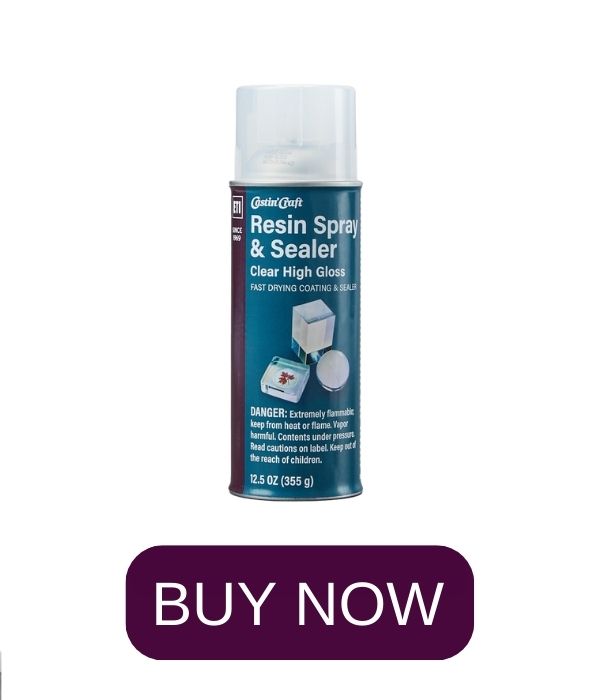
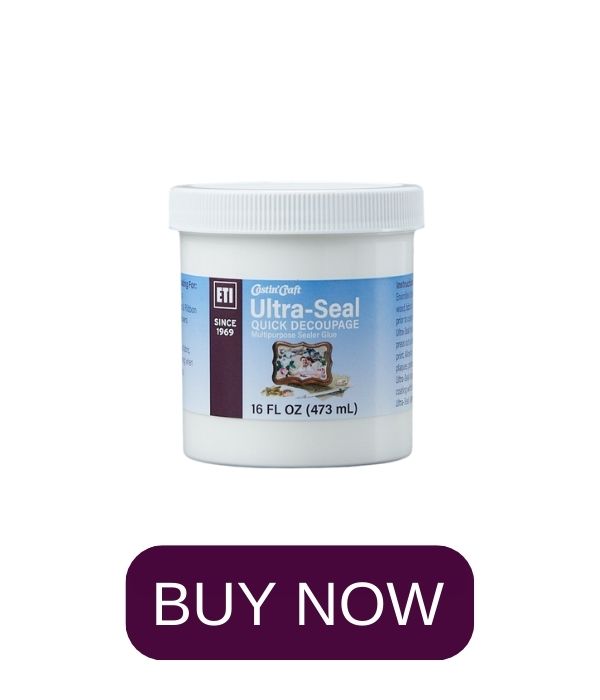
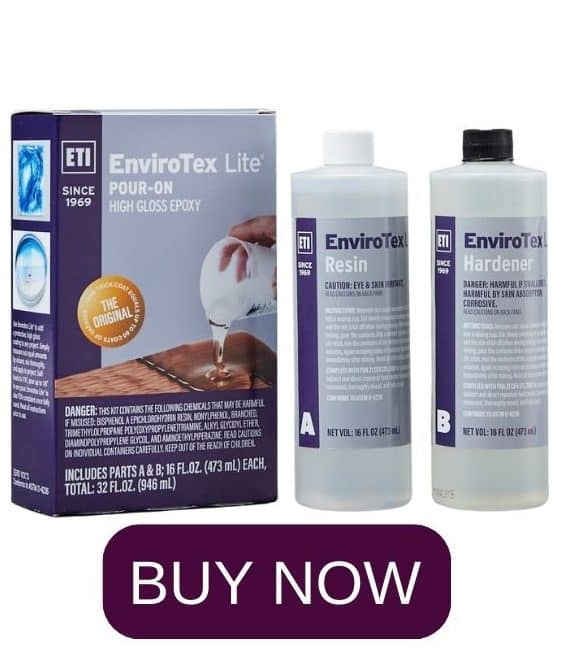
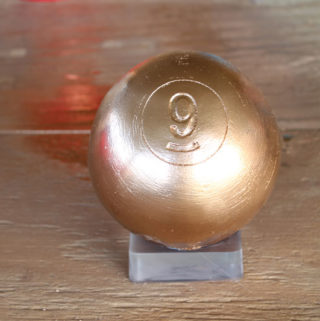

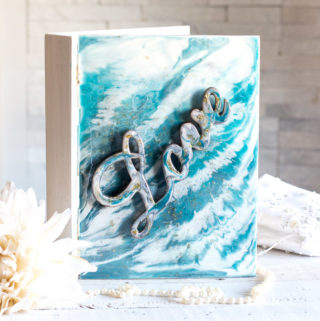
Stephanie, TY so much for answering many of my questions about sealing different types of paper before covering them in resin! You rock!
Glad to hear it’s helpful Cindy! Have fun!
Hi there
I’m trying to use old shopping bags in acrylic serving trays. I’ve coated the cut outs in mod Podge , waited for it to dry and then found that spray glue works best to glue it to the tray prior to resin pour. Mod Podge to glue the grated paper down to the tray caused bubbles. Spray glue seemed to work best. However – when I poured the resin – my coated shopping bags all changed colors with tons of water marks. The mod lodge shopping bags looked fully coated and great. Now my trays have water marked shopping bags in the resin. How do I prevent the color from changing? Is it the spray glue, the mod Podge … what is it? Please help. This is driving me nuts. How can I prevent these water marks? I’m about to buy a laminating machine thinking that might help. I’m reading about mod Podge as the best sealer – but something this making these bags change colors. Sealant ? Or spray glue reacting with the resin?
We’ve never used spray glue so can’t really speak to that unfortunately. Using mod podge is best but you do have to smooth it down periodically while the coats dry to smooth out the bubbles that pop up during the drying process.
I print off comments on photo paper and resonate them with other papers but still can’t get it right. I have tried not sealing the paper, lots of little bubbles. Sellotaping both sides, resin seeped in water marked the paper and turned glue white. Laminating, resin seeped in the cut edges, maybe could seal edge with taky glue? PVA and mod podge made print run and the resin seeped in. Taky glue seeped in again. But might work if I smooth it? So frustrating. Still researching.
Modpodge should work but best to brush it on in VERY thin layers to avoid color running.
When you are laminating, do not cut up to your picture. Because than you are opening up the seal. You need to cut about a 1/4 around your picture to make sure the lamination is sealed. Than you shouldn’t have a problem. You should be able to see that seal when it is laminated. Hope this helps and works!
Andi
I’m using ceramic glaze to coat my paper. It seems to work well.
Glad to hear – thanks for sharing!
Hi may I ask , I want to put a resin piece in to a photo box, would I need to seal the card before the resin piece is glued into place ?
Hi! Yes that’s the best practice to help keep the card from fading.
Thanks for the tips, I have a big image I had printed. now I want to coat it in resin, but I’ll use a finishing spray first.
Hair spray honestly works amazing
I’m just getting started with resin. Is it possible to dip a card stock rose in a colored resin (or would it be epoxy), and once dry, then enclose it in a clear epoxy? Does it need to be sealed before dipping, if this is even do-able?
Hi Anne! You would want to seal it before applying the resin. We would recommend pouring on the resin (Envirotex Lite) as opposed to dipping.
Thanks so much. I SOo appreciate you taking the time and I can guarantee you this isn’t the last you’ll hear from me. I found a nice comfort level here when I had read some of the questions and there were no intimidating replies which I found very inviting. Believe it or not, I have NEVER asked anything on any site, not ever. So you should be very pleased with the great job you are doing here, and the friendly tone you have set for others. I have even told a friend of mine who is getting started with working with epoxy and resin with me. Again, thanks to all that have contributed to the friendly environment that has been made here. It’s a great help to people like myself.
It’s our pleasure, Anne! We’re so glad you felt comfortable to ask and glad that you won’t ever hesitate… that’s what we’re here for! 🙂
If the paper is laminated, do I have to treat it in any way before pouring the resin on it? I’m just starting out….
Thanks in advance,
Stephanie
it’s always a good idea to seal… a light spray of envirotex spray is great for this.
I am interested in having a photo copied to use in epoxy resin. I’m still learning and this would be my first attempt with a photograph. I read the comments above and I’m trying to clarify a question. I’m using amazing cast resin. The acrylic one. You mentioned using envirotex pouron to seal the pictures. Can you use a clear spray on acrylic sealer instead?
The Envirotex Clear High Gloss sealer used above is an acrylic spray, so another kind should work. However, I will mention that the Envirotex brand is the only one I tested, so I can’t speak to the results of another brand. It would be a good idea to practice on a spare photograph first if possible.
Are you able to use a regular photo like from a album? I ask because I have a regular photo and I bought a resin art picture I want to put it in. I also have mod podge photo transfer not sure if I grabbed the right things.
I always recommend doing a practice piece first, before you work with an original / non-replaceable item or photo. You will want to seal the photo with regular Mod Podge, or our gloss spray sealer. The Mod Podge Photo Transfer formula has a different purpose.
Hi there! I’m trying to seal stickers printed on transparent sticker papers in resin. Will sealing them in glue prevent the colour from seeping or fading off?
Yes a proper sealer will help maintain the color!
I am making earrings from postage stamps. I know how to seal the paper. My challenge is getting the perfect 3/8 inch pour. I’m beginn8ng to think easy cast is wrong material. Should I be using something different. Silicon molds okay. Okay to use canola oil for mold release?
Hi Chris, jewelry resin or Envirotex Lite would be ideal for this project if you want that thin of a pour. If you’re using a silicone mold you won’t need mold release.
If embedding a photo in resin, do I need to also seal the backside of the photo?
My plan is to sandwich the photo in resin. Would I need to stick the photo to dry first layer of resin and if so, with what kind of glue?
Thanks for your help.
Hi! Yes, you would want to see the front and back. You can use UltraSeal, modpodge or resin spray sealer.
I’ll add too – once you have sealed the photo, both sides, and it’s dry, as Lydi mentioned, you can spray the back of the photo again just a bit and it will give it enough tack to stick it down to your first resin layer, then pour on the top resin layer.
I am wondering if you can do an update to this blog that shows the differences between sealing vs. not sealing between UV and Epoxy resin.
I am going to assume that you used epoxy resin. It would be great to also see if I need to seal the paper before using UV resin.